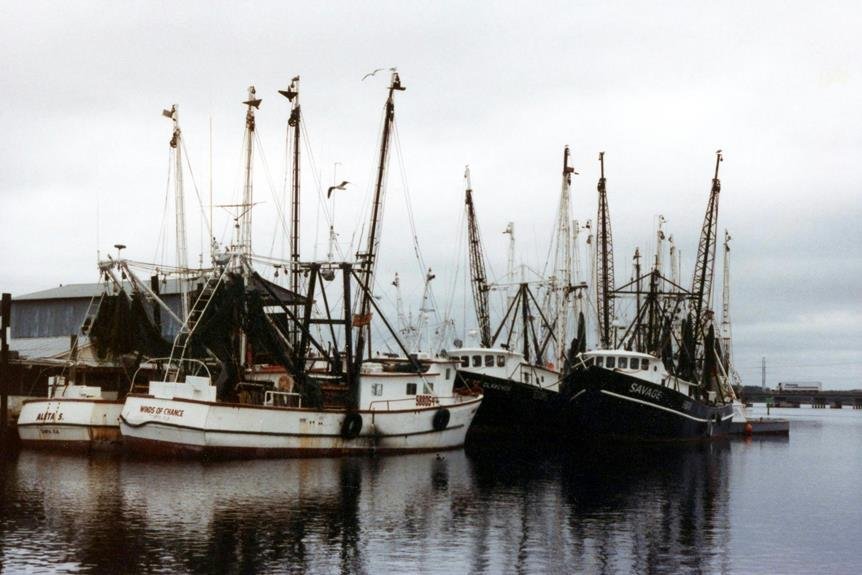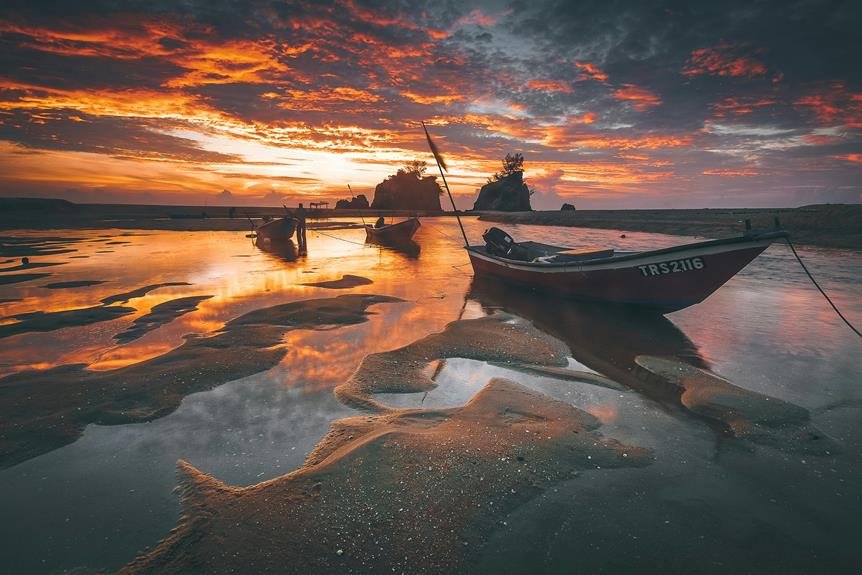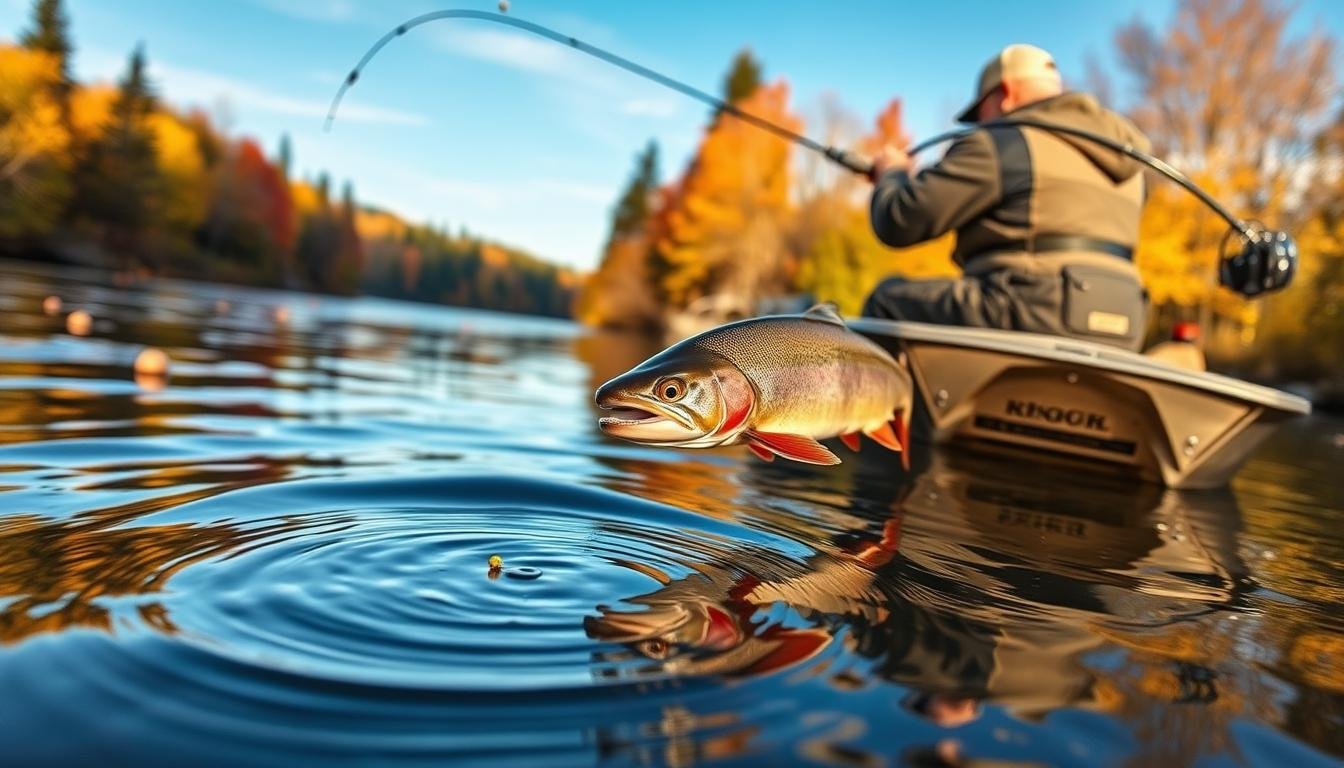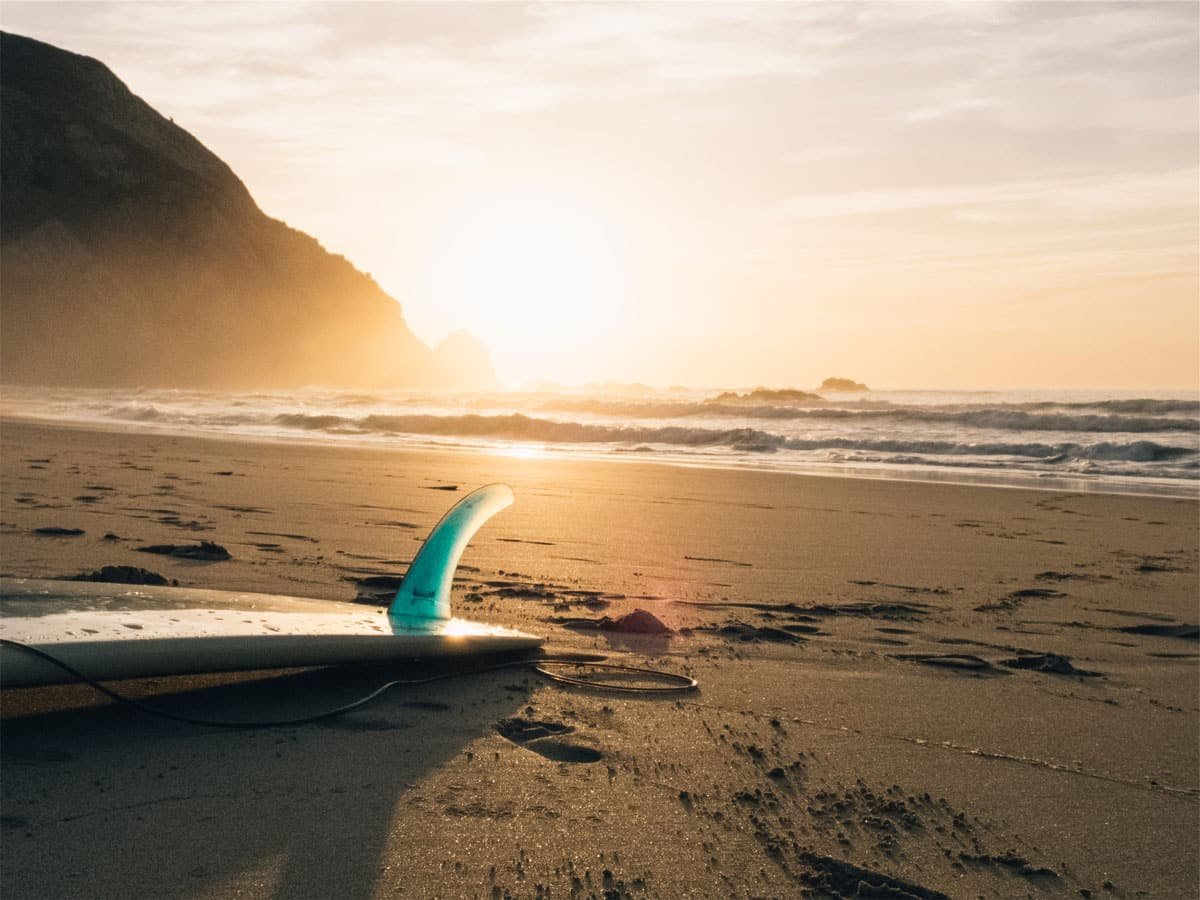California offers unparalleled pier fishing opportunities, with over 800 miles of coastline featuring numerous public piers that provide access to a diverse range of species. From halibut and flounder in Northern California to corbina and mackerel in Southern California, understanding local pier etiquette and tidal cycles is essential for a successful fishing trip. By mastering fishing rigs and techniques, and selecting the right gear and bait, anglers can increase their chances of catching fish. Meanwhile, staying informed about ocean tides, fishing regulations, and local resources can make all the difference – and there's still more to discover about the world of California pier fishing.
Key Takeaways
- California offers over 800 miles of coastline with numerous public piers for fishing various species, including flounder, halibut, corbina, and mackerel.
- Consult tide charts to determine the best fishing times, and plan trips during peak fishing seasons and tidal cycles for maximum success.
- Select the right bait, such as sand crabs or cut baits, considering the target species and fishing location, and practice responsible fishing ethics.
- Use a suitable fishing rig, such as a two-hook bottom fishing rig or a three-way saltwater fishing rig, and experiment with different rigs to adapt to changing conditions.
- Pack the right gear, including a medium- to medium-heavy action rod, 12- to 14-pound test monofilament line, and suitable hooks and sinkers, and obtain a valid California fishing license.
Pier Fishing Locations
With over 800 miles of coastline, California boasts numerous public piers that offer anglers a wide range of opportunities to catch a variety of species. From Northern California's piers, anglers can target flounder and halibut, while Southern California piers, such as those in San Diego, provide chances to catch corbina and mackerel. When fishing at these piers, proper pier etiquette is crucial, respecting fellow anglers and the environment. Joining local fishing communities can also provide valuable insights and tips from experienced anglers. By choosing a pier that suits your fishing goals and adhering to pier etiquette, you can maximize your chances of a successful and enjoyable fishing experience in California.
Tides and Planning
Understanding the intricacies of California's tides is essential for planning a successful pier fishing trip, as the best ocean fishing opportunities often depend on the tidal movements. To maximize your chances of catching fish, it's vital to plan your trip according to the tides. Here are some tips to help you plan:
- Consult tide charts online to determine the best times for pier fishing.
- Use fishing calendars to plan your trip during peak fishing seasons.
- Plan your trip during periods of moving tides, as these tend to be the most productive.
- Adjust your fishing schedule according to the tidal cycles to increase your chances of catching fish.
California Pier Fishing Bait
When it comes to pier fishing in California, selecting the right bait is a vital component of a successful fishing trip, as different species of fish are attracted to specific baits and presentations. Effective bait selection is vital, and paramount to think about the target species and fishing location. For instance, sand crabs are a popular choice for catching California corbina, while cut baits like squid are often preferred by Pacific mackerel. It's also important to practice responsible fishing ethics, such as handling bait gently and humanely, and respecting local regulations. By making informed bait selections and adhering to fishing ethics, anglers can increase their chances of a successful catch while promoting sustainable fishing practices.
Fishing Rigs and Techniques
Effective pier fishing rigs are essential to presenting baits naturally and enticingly to target species, and a well-chosen rig can markedly boost an angler's chances of landing a coveted catch. A thoughtful approach to rig selection is a key component of pier fishing mastery. To optimize your fishing experience, consider the following fishing strategies:
- Two-hook bottom fishing rig: Ideal for targeting species like halibut and flounder.
- Three-way saltwater fishing rig: Effective for catching species like mackerel and corbina.
- Experiment with different rigs: Adapt to changing fishing conditions and species behavior.
- Practice and patience: Mastering pier fishing techniques requires time and persistence.
Pier Fishing Gear Essentials
Selecting the right pier fishing gear is essential to a successful and enjoyable fishing experience, as it allows anglers to present baits naturally and efficiently target their desired species. A well-maintained rod and reel combo is vital, and regular Gear Maintenance is necessary to prevent corrosion and wear.
| Gear Component | Description | Tips |
|---|---|---|
| Rod Selection | Medium- to medium-heavy action, 8-9 feet long | Suitable for most pier fishing situations |
| Line | 12- to 14-pound test monofilament | Resistant to abrasion and suitable for pier fishing |
| Hooks | Size 2 to 6, depending on bait and species | Sharpen hooks regularly for better hooksets |
| Sinkers | Pyramid or egg sinkers, 1-4 oz | Adjust sinker weight according to water conditions |
| Swivels | Optional, but helps prevent line twisting | Use when using multiple hooks or lures |
Proper gear selection and maintenance will help you focus on what matters most – catching fish!
Understanding Ocean Tides
As pier anglers, understanding the intricacies of ocean tides is crucial for maximizing fishing success, as the tidal cycles dramatically impact the behavior and movement patterns of targeted species. Ocean patterns and tide cycles profoundly influence the feeding habits and migration routes of fish, making it essential to comprehend these patterns to increase catch rates.
To better understand ocean tides, consider the following key factors:
- Tidal ranges: The difference between high and low tide marks, affecting water levels and fish behavior.
- Tidal currents: Strong water movements during tidal changes, influencing fish migration and feeding patterns.
- Tide cycles: The predictable, cyclical changes in ocean tides, enabling anglers to plan and prepare for prime fishing times.
- Moon phases: The lunar cycle's impact on ocean tides, with full and new moons often triggering peak tidal activity.
Fishing Resources and Tools
With a vast array of online resources and tools at their disposal, California pier anglers can now access a wealth of information to enhance their fishing experience. From fishing apps to online forums, there's no shortage of digital tools to aid in planning and execution. The following table highlights some of the most valuable resources available:
| Resource | Description |
|---|---|
| Fishidy | Fishing app providing real-time fishing reports and forecasts |
| Pier Fishing Forum | Online community for pier anglers to share tips and experiences |
| California Department of Fish and Wildlife | Official website for fishing regulations, licenses, and conservation |
| Surf-Forecast | Surf and fishing forecast app providing tide and wave conditions |
| California Pier Fishing Guide | Exhaustive online guide to pier fishing in California |
Planning a Pier Fishing Trip
How do you guarantee a successful pier fishing trip in California, from choosing the right pier to preparing the necessary gear and bait? It all starts with planning. Before you head out, make sure you have a valid California fishing license and check the weather forecast to secure favorable fishing conditions. Here are some key considerations to add to your planning checklist:
- Check the weather forecast: Avoid planning your trip during strong winds or rough seas.
- Choose the right pier: Select a pier that's known for the species you want to catch.
- Pack the right gear: Bring a medium- to medium-heavy fishing rod and 12- to 14-pound test monofilament line.
- Obtain any necessary permits: In addition to your fishing license, some piers may require a pier-specific permit.
It all starts with planning. Before you head out, make sure you have a valid California fishing license and check the weather forecast to maximize fishing conditions.
Frequently Asked Questions
Do I Need a Fishing License to Pier Fish in California?
"In California, a sport fishing license is generally required for pier fishing, except for individuals under 16 or over 69 years old, who are exempt from license requirements, making it essential to review age exemptions and license necessities prior to casting a line."
Can I Bring My Pet on a California Pier for Fishing?
Before heading out, consider that 70% of pet owners take their pets with them on outdoor adventures. Regarding pet etiquette, check pier rules beforehand, as some piers have pet restrictions or require leashes, ensuring a harmonious fishing experience for all.
Are There Any Pier Fishing Restrictions for Minors?
Regarding age restrictions, minors can typically participate in pier fishing with adult supervision; however, some piers may have specific age limits or Youth programs, so be sure to check local regulations and pier rules before planning a fishing trip.
Can I Fish at Night on a California Public Pier?
As nightfall descends, like a veil of secrecy, pier fishing takes on a new dimension. In California, public piers generally allow night fishing, but be mindful of pier lighting, which can affect fish behavior, and adapt your techniques accordingly for a successful night's catch.
Are There Pier Fishing Spots With Wheelchair Accessibility?
Many public piers along California's coastline offer wheelchair-accessible facilities, including accessible piers and beach ramps, ensuring equal opportunities for anglers of all abilities to enjoy pier fishing.
Conclusion
California pier fishing offers an enchanting experience, where careful planning and preparation converge with the cadence of the ocean's tides. By synchronizing skills with the subtle shifts of the sea, anglers can seize success. Through calculated choices of bait, gear, and techniques, pier fishermen can orchestrate a harmonious dance with the marine environment, yielding a rich and rewarding experience.









